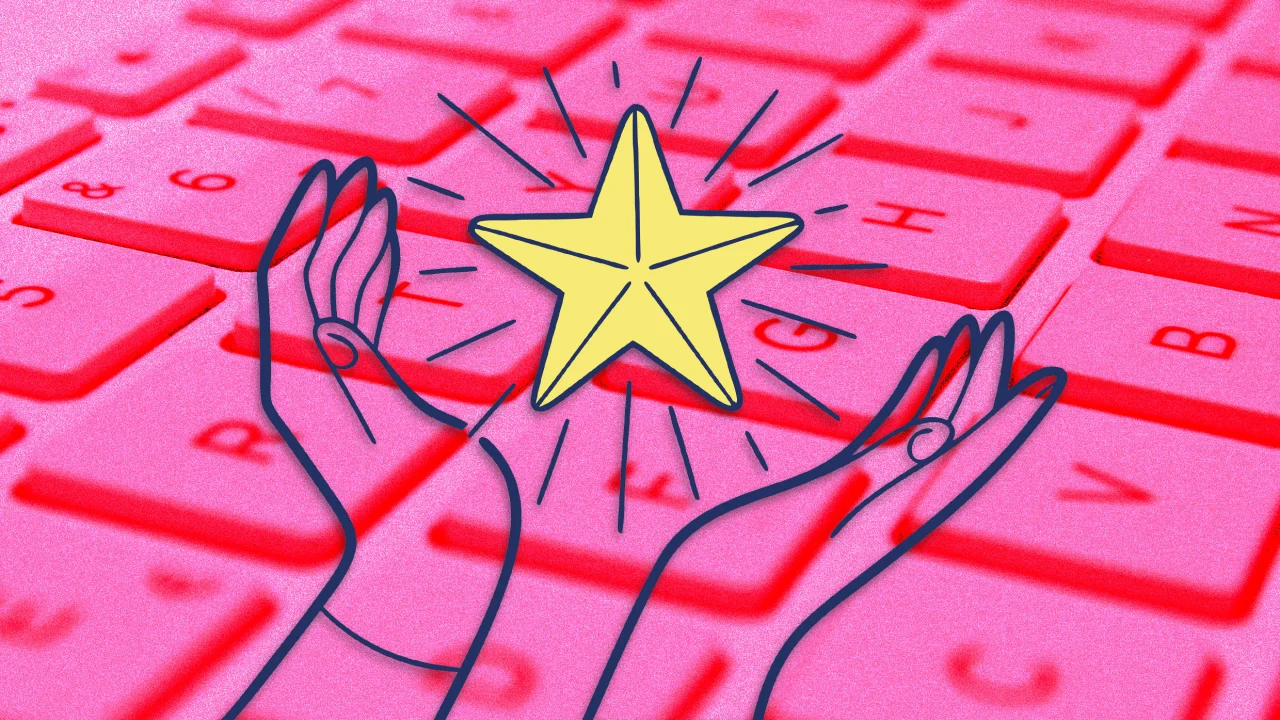AI isn’t coming for your job—it’s coming for your company
Debate about whether artificial intelligence can replicate the intellectual labor of doctors, lawyers, or PhDs forgoes a deeper concern that’s looming: Entire companies—not just individual jobs—may be rendered obsolete by the accelerating pace of AI adoption.
Reports suggesting OpenAI will charge per month for agents trained at a PhD level spun up the ongoing debate about whose job is safe from AI and whose job is not.
“I’ve not seen it be that impressive yet, but it’s likely not far off,” James Villarrubia, head of digital innovation and AI at NASA CAS, told me.
Sean McGregor, the founder of Responsible AI Collaborative who earned a PhD in computer science, pointed out how many jobs are about more than just a set of skills: “Current AI technology is not sufficiently robust to allow unsupervised control of hazardous chemistry equipment, human experimentation, or other domains where human PhDs are currently required.”
The big reason I polled the audience on this one was because I wanted to broaden my perspective on what jobs would be eliminated. Instead, it changed my perspective.
AI needs to outperform the system, not the role
Suzanne Rabicoff, founder of the human agency think tank and fractional practice, The Pie Grower, gave me some reading assignments from her work, instead of a quote.
Her work showed me that these times are unprecedented. But something clicked in my brain when she said in her writing that she liked the angle of more efficient companies rising instead of jobs being replaced at companies with a lot of tech and human capital debt. Her response to that statement? “Exactly my bet.”
Sure, this is the first time that a robot is doing the homework for some college students. However, there is more precedent for robots moving market share than for replacing the same job function across a sector.
Fortune 500 companies—especially those bloated with legacy processes and redundant labor—are always vulnerable to decline as newer, more nimble competitors rise. And not because any single job is replaced, but because the foundational economics of their business models no longer hold.
AI doesn’t need to outperform every employee to render an enterprise obsolete. It only needs to outperform the system.
Case study: The auto industry
Take, for example, the decline of American car manufacturers in the late 20th century.
In the 1950s, American automakers had a stranglehold on the car industry, not unlike today’s tech giants. In 1950, the U.S. produced about 75% of the world’s cars.
But in the 1970s, Japanese automakers pioneered the use of robotics in auto manufacturing. These companies produced higher-quality vehicles at great value thanks to leaner operations that were also more precise.
Firms like GM struggled to keep up, burdened by outdated factories and excessive human capital costs—including bloated pensions.
The seismic shift in the decades to follow paints a picture of what could be in store for large companies now. In 1960, the U.S. produced about 48% of the world’s cars, while Japan accounted for just 5%. By 1980, Japan had captured around 29% of the market, while the U.S. had fallen to 23%.
Today’s AI shakeup could look similar. Decades from now, we could look at Apple similarly to how we look at Ford now. AI startups with more agile structures are poised to eat market share. On top of that, startups can focus on solving specialized problems, sharpening their competitive edge.
Will your company shrivel and die?
The fallout has already begun. Gartner surveyed organizations in late 2023, finding that about half were developing their own AI tools. By the end of 2024, that dropped to 20%. As hype around generative AI cools, Gartner notes that many chief information officers are instead using outside vendors—either large language model providers or traditional software sellers with AI-enhanced offerings. In 2024, AI startups received nearly half of the billion in global venture funding. If only 20% of legacy organizations currently feel confident competing with these upstarts, how many will feel that confidence as these startups mature?
While headlines continue to fixate on whether AI can match PhD-level expertise, the deeper risk remains largely unspoken: Giant companies will shrivel and some may die. And when they do, your job is at risk whether you greet customers at the front desk or hold a PhD in an engineering discipline.
But there are ways to stay afloat. One of the most impactful pieces of advice I ever received came from Jonathan Rosenberg, former SVP of products at Google and current advisor to Alphabet, when I visited the company’s campus in college. “You can’t just be great at what you do, you have to catch a great wave. Early people think it’s about the company, then the job, then the industry. It’s actually industry, company, job…”
So, how do you catch the AI wave?
Ankur Patel, CEO of Multimodal, advises workers to learn how to do their current jobs using AI tools that enhance productivity. He also notes that soft skills—mobilizing people, building relationships, leading teams—will become increasingly valuable as AI takes over more technical or routine tasks.
“You can’t have AI be a group leader or team leader, right? I just don’t see that happening, even in the next generation forward,” Patel said. “So I think that’s a huge opportunity…to grow and learn from.”
The bottom line is this: Even if the AI wave doesn’t replace you, it may replace the place you work. Will you get hit by the AI wave—or will you catch it?
George Kailas is CEO of Prospero.ai.
#isnt #coming #your #jobits #company
AI isn’t coming for your job—it’s coming for your company
Debate about whether artificial intelligence can replicate the intellectual labor of doctors, lawyers, or PhDs forgoes a deeper concern that’s looming: Entire companies—not just individual jobs—may be rendered obsolete by the accelerating pace of AI adoption.
Reports suggesting OpenAI will charge per month for agents trained at a PhD level spun up the ongoing debate about whose job is safe from AI and whose job is not.
“I’ve not seen it be that impressive yet, but it’s likely not far off,” James Villarrubia, head of digital innovation and AI at NASA CAS, told me.
Sean McGregor, the founder of Responsible AI Collaborative who earned a PhD in computer science, pointed out how many jobs are about more than just a set of skills: “Current AI technology is not sufficiently robust to allow unsupervised control of hazardous chemistry equipment, human experimentation, or other domains where human PhDs are currently required.”
The big reason I polled the audience on this one was because I wanted to broaden my perspective on what jobs would be eliminated. Instead, it changed my perspective.
AI needs to outperform the system, not the role
Suzanne Rabicoff, founder of the human agency think tank and fractional practice, The Pie Grower, gave me some reading assignments from her work, instead of a quote.
Her work showed me that these times are unprecedented. But something clicked in my brain when she said in her writing that she liked the angle of more efficient companies rising instead of jobs being replaced at companies with a lot of tech and human capital debt. Her response to that statement? “Exactly my bet.”
Sure, this is the first time that a robot is doing the homework for some college students. However, there is more precedent for robots moving market share than for replacing the same job function across a sector.
Fortune 500 companies—especially those bloated with legacy processes and redundant labor—are always vulnerable to decline as newer, more nimble competitors rise. And not because any single job is replaced, but because the foundational economics of their business models no longer hold.
AI doesn’t need to outperform every employee to render an enterprise obsolete. It only needs to outperform the system.
Case study: The auto industry
Take, for example, the decline of American car manufacturers in the late 20th century.
In the 1950s, American automakers had a stranglehold on the car industry, not unlike today’s tech giants. In 1950, the U.S. produced about 75% of the world’s cars.
But in the 1970s, Japanese automakers pioneered the use of robotics in auto manufacturing. These companies produced higher-quality vehicles at great value thanks to leaner operations that were also more precise.
Firms like GM struggled to keep up, burdened by outdated factories and excessive human capital costs—including bloated pensions.
The seismic shift in the decades to follow paints a picture of what could be in store for large companies now. In 1960, the U.S. produced about 48% of the world’s cars, while Japan accounted for just 5%. By 1980, Japan had captured around 29% of the market, while the U.S. had fallen to 23%.
Today’s AI shakeup could look similar. Decades from now, we could look at Apple similarly to how we look at Ford now. AI startups with more agile structures are poised to eat market share. On top of that, startups can focus on solving specialized problems, sharpening their competitive edge.
Will your company shrivel and die?
The fallout has already begun. Gartner surveyed organizations in late 2023, finding that about half were developing their own AI tools. By the end of 2024, that dropped to 20%. As hype around generative AI cools, Gartner notes that many chief information officers are instead using outside vendors—either large language model providers or traditional software sellers with AI-enhanced offerings. In 2024, AI startups received nearly half of the billion in global venture funding. If only 20% of legacy organizations currently feel confident competing with these upstarts, how many will feel that confidence as these startups mature?
While headlines continue to fixate on whether AI can match PhD-level expertise, the deeper risk remains largely unspoken: Giant companies will shrivel and some may die. And when they do, your job is at risk whether you greet customers at the front desk or hold a PhD in an engineering discipline.
But there are ways to stay afloat. One of the most impactful pieces of advice I ever received came from Jonathan Rosenberg, former SVP of products at Google and current advisor to Alphabet, when I visited the company’s campus in college. “You can’t just be great at what you do, you have to catch a great wave. Early people think it’s about the company, then the job, then the industry. It’s actually industry, company, job…”
So, how do you catch the AI wave?
Ankur Patel, CEO of Multimodal, advises workers to learn how to do their current jobs using AI tools that enhance productivity. He also notes that soft skills—mobilizing people, building relationships, leading teams—will become increasingly valuable as AI takes over more technical or routine tasks.
“You can’t have AI be a group leader or team leader, right? I just don’t see that happening, even in the next generation forward,” Patel said. “So I think that’s a huge opportunity…to grow and learn from.”
The bottom line is this: Even if the AI wave doesn’t replace you, it may replace the place you work. Will you get hit by the AI wave—or will you catch it?
George Kailas is CEO of Prospero.ai.
#isnt #coming #your #jobits #company
















